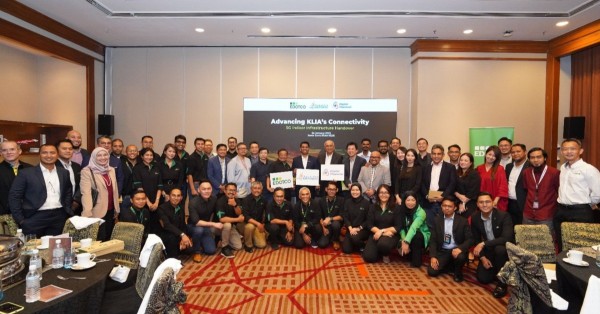MediaTek reached a new 5G milestone by powering a smartphone with a 5G Non-Terrestrial Network (NTN) connection in a lab environment for the first time. Through a transfer of data to ITRI’s Next Generation NodeB network (gNB) test over a Low Earth Orbit (LEO) satellite channel emulated in collaboration with Rohde & Schwarz, MediaTek has demonstrated a world-first and showcased the capability of supporting satellite communications with commercial 5G smartphone hardware.
This achievement was completed in a MediaTek lab using Rohde & Schwarz test equipment, emulating a realistic LEO satellite constellation at 600km altitude where each satellite is moving extremely fast – nearly 27,000km per hour – in orbit. The smartphone was powered by MediaTek’s NR NTN-enabled test chip connected to the test gNB by ITRI. The test chip was designed to meet the 3GPP Release 17 spectrum-defined functionality to simulate Doppler and timing variation effects by LEO satellite channels.
“This milestone continues MediaTek’s long track record of 5G R&D innovations,” said HC Hwang, General Manager of Wireless Communication System and Partnership at MediaTek. “With this test, MediaTek successfully validated the capability of connecting a 5G smartphone to satellite networks, opening up the door for 5G satellite network development to bring ubiquitous connectivity around the world.”
MediaTek’s demonstration showcases how 5G NTN technology can be used for satellite communications by employing the same form factor and design components as a standard smartphone. 5G NTN technology will help boost service reliability across the globe by harnessing existing terrestrial networks and economies of scale in the cellular sector, making fast and reliable 5G connectivity much more accessible in unserved and underserved areas. In addition to the consumer use cases for expanded 5G access, there are a number of business and enterprise use cases including critical communications, transportation, agriculture, fleet and heavy machine management and Internet of Things (IoT) devices.
Gerald Tietscher, Vice President Signal Generators Product Division at Rohde & Schwarz, said, ”Ubiquitous connectivity is an important societal goal and Rohde & Schwarz is committed to providing test and measurement solutions that will help to bring the latest enabling technologies to the market.”
“In this lab testing, ITRI proves that its gNB (CU, DU, and RU) technology can be fully integrated into an NR NTN communication system,” said Dr. Pang-An Ting, General Director of Information and Communications Research Laboratories at ITRI. “As a frontier developer, we see a promising future of 3GPP NTN communication, as it supports wider coverage and seamless connectivity service while integrating with terrestrial networks.”
MediaTek is an active contributor to 3GPP Release 17 standardization work, which may help eliminate the need for traditionally bulky antennae on 5G NTN smartphones. Furthermore, solutions can leverage sophisticated 5G physical layer designs to overcome severe signal fading in time/frequency domains. Sharing the same protocol stack also allows NTN solutions to facilitate switching between cellular and satellite networks using the same device.




















